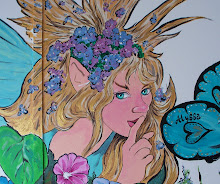The term Forensic Artist or Composite Artist means different things to different people. I believe that for most of the population it conjures up a mental image of a man or woman in a suit with a briefcase full of artists supplies, a nice, quiet office in which to work with the witness, and a hefty paycheck at the end of the day. The truth is that very few people actually make their living being Forensic/Composite Artists. There just isn’t enough constant work to keep them busy. It is typically a sideline. Those who have the professional title of Forensic/Composite Artist generally do a lot more than draw or reconstruct faces. They either are involved in teaching the subject to certification classes or they give lectures or are professional witnesses. It is a unique job and actually there are very few people who are truly good at the task. More often than not, it is someone like myself, who works in conjunction with the Police or Sheriff’s Office or some other facet of the law enforcement world and happens to have a talent for drawing faces and
interviewing. In fact, I have often argued that those people who do forensic or composite drawings are not really artists at all. This has nothing to do with creating art. It certainly takes a high degree of talent but it has little to do with expression or creativity.
Notice I did not say a talent for drawing portraits. A composite sketch is not a portrait. It is the reproduction of someone’s memory, or at least that’s what we attempt to do. Most people who witness a crime or are involved as a victim, are pretty stressed at the moment of the crime and end up being somewhat traumatized. If four people witness a convenience store holdup you may have to interview each of those four people to get an idea of what the holdup guy really looked like. One will recall a pair of dark, angry eyes while another will have concentrated on the Fu Manchu moustache and a third will say he was missing an ear. The fourth witness may tell you the perp was a woman in men’s clothing. It’s not an easy task.
Since the artist is drawing a memory, however, it is pretty important to get to the witness as soon as possible. If the memory is over three days old it has probably faded too much to give accurate information. This being the case, the idea of a composite artist sitting in a nice office with a briefcase full of supplies goes directly out the window.
I have done composite drawings with a Number 2 pencil on the back of a bank statement while sitting on the tailgate of an old pickup truck. If that’s where the witness is, that’s where you do the drawing. If you have no supplies with you, you use what you can find. The important thing is to not allow the memory to get old. You also have to know how to draw out that memory. This is where interviewing becomes vital. A forensic artist has to have the ability to interview, to bring out the memory that is stuffed away inside the witness or victim’s head. The more traumatized the witness or victim, the harder this may be, especially with children. To them, every bad guy looks like Freddy Kruger or Cruella DeVille.
Drawing dead people is a lot easier. I can honestly say “I see dead people!” or at least I have seen dead people. Several times. This is typically in the course of trying to identify a victim, someone who has been found deceased with no ID to allow the authorities to notify next of kin or go about solving the crime. It’s extremely difficult to find a killer when you don’t know who the victim is. Naturally the authorities will attempt to match fingerprints, if there are fingerprints to use, but not everyone on earth has a record of their prints on file, especially when it’s a young person.
My first forensic experience in a morgue had to do with the case of Baby Doe. A man and his son were riding horseback along the fence line that follows the highway north of Phoenix when they spotted what they thought to be a burned, discarded doll lying in the brush near the side of the highway. Closer inspection proved the doll was, in fact, a burned human child. There were no fingerprints and even if there had been, a child of that age (a year old or thereabouts) would certainly not have any record on file.
Baby Doe was severely burned but there were some tiny, charred features still in tact. This being the case, authorities decided to attempt to identify the child by means of a composite sketch and then a facial reconstruction from the infant’s skull. It would have been far too traumatic for the general public to see a photograph of the actual, burned baby on the front page of the newspaper with the headline: “Do you recognize this child?” A lifelike drawing is always much more acceptable in any public identification. The problem with this is that on a very young child the features are somewhat generic and reproducing them by two or three-dimensional means is like grasping at smoke. I agreed to try a sketch, however, leaving the three-dimensional skull reconstruction to someone who had been at that job much longer than I.
Subscribe to:
Post Comments (Atom)

No comments:
Post a Comment